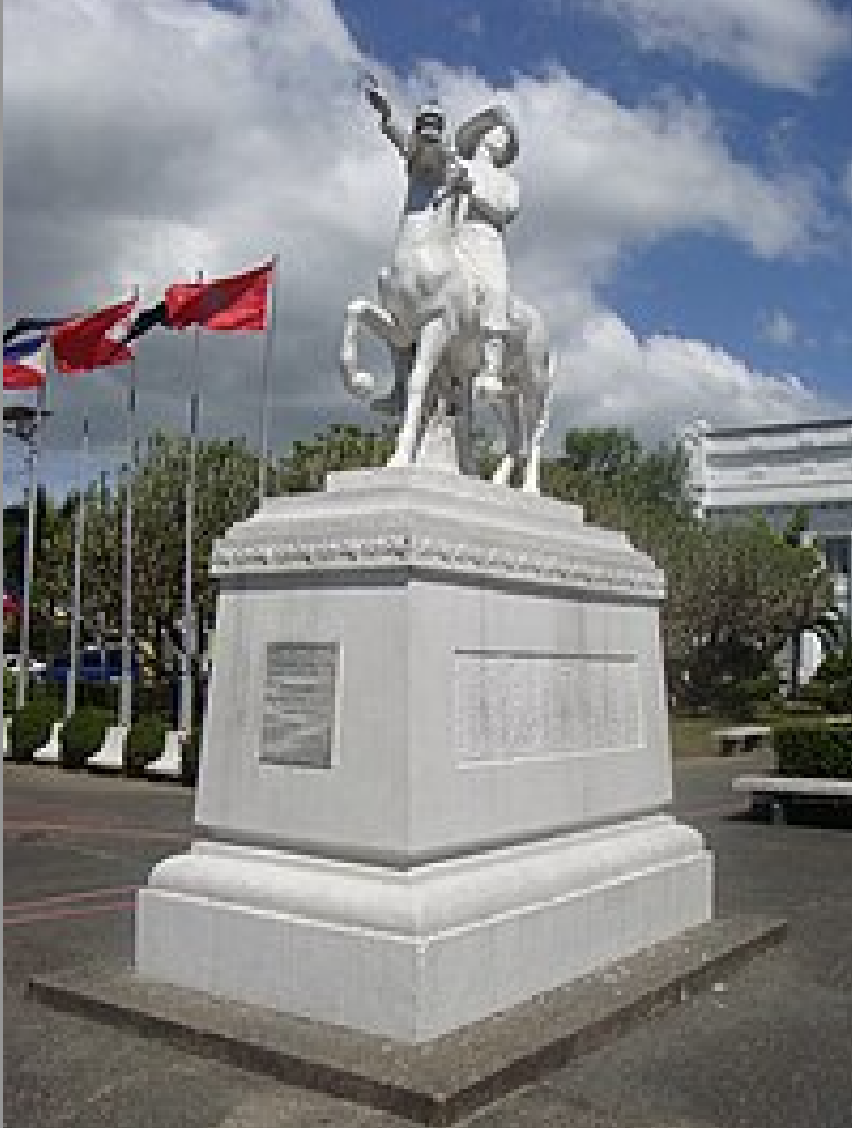November 1899: Gen. Emilio Aguinaldo changes tactics during Philippine-American War

Statue of General Gregorio del Pilar / Photo from Wikipedia
The month of November 1899 marked a dramatic change in the Philippine-American War. General Emilio Aguinaldo and his senior advisors finally decided to change the strategy and tactics on how to fight the United States.
The official date of the change was November 12, 1899. The war was now in its 10th month.
The overall strategy changed from conventional warfare between the superior American forces and the Philippine Revolutionaries to a guerrilla style of fighting. The Philippine Revolutionary Army was disbanded. The Filipinos established zones of guerrilla activity, which were managed by a zone commander.
With the change in strategy, the Philippine guerrillas modified their tactics. First, they no longer wore uniforms. They dressed in typical civilian clothes to blend in with the general population.
Second, they would covertly raid American garrisons throughout the islands.
Third, the guerrillas would harass American patrols and then blend into the civilian communities.
Fourth, they would ambush unsuspecting American patrols with the hope of recovering rifles, ammunition and other valuable supplies. Finally, the guerrillas would coordinate multiple surprise attacks on American troops including supply and payroll wagons.
Both American and Filipino historians have criticized General Aguinaldo and senior Philippine officers for not starting with a guerrilla strategy shortly after February 4, 1899.
By early February 1899, the Americans had military superiority in weapons and training. The U.S. Navy was also a major asset for the Americans with many large, medium and small vessels.
The prospects for an increase in American superiority only grew with each passing month. Based on this analysis of the battlefield conditions, the criticism of General Emilio Aguinaldo and other officers would be justified.
There was evidence that General Aguinaldo and other senior officers did authorize simultaneous conventional and guerrilla warfare during the early months of the war. Once the fighting started on February 4, 1899, there were multiple incidences of arson at important sites in Manila. In theory, the Americans had control of Manila at this time.
There were also many unconventional attacks on American supply wagons from the front lines to Manila. The Americans were facing conventional Philippine forces while their comrades were being attacked by small unconventional bands of fighters behind American lines.
When the Americans supposedly control the territory from Malolos to Manila in March and April of 1899, the Americans had to endure constant harassment and attacks by unconventional Philippine forces.
During the November 12, 1899, change in strategy by Emilio Aguinaldo, the Americans continued their three-prong attack to capture General Aguinaldo. General Arthur MacArthur commanded the first prong of the attack. The general was ordered to keep the pressure on Aguinaldo’s troops in Central Luzon.
The second prong of the plan was an amphibious landing by General Loyd Wheaton at Lingayen Gulf. General Wheaton would proceed south with the intent to meet up with the first and third prongs and block any escape routes for General Aguinaldo.
General Henry Lawton commanded the third prong. His goal was to use the speed of the U.S. calvary to block and close off all mountain passes in Northern Luzon.
With all the American troops in Northern Luzon, the American still did not know where General Aguinaldo was located. On November 13, 1899, Aguinaldo boarded a train to Calasiao in Pangasinan Province. From there, he continued to stay on the move to avoid being captured.
Eventually by the end of November, the American soldiers were able to locate General Aguinaldo and some of his remaining forces at a steep and rugged mountain site with great visibility called Pasong Tirad, also known as the Tirad Pass. Unknown to the Americans who were in hot pursuit, Emilio Aguinaldo was able to escape.
General Gregorio del Pilar, also known as the “boy general” was tasked to delay the American advance. On December 1, 1899, the Americans reached Pasong Tirad. On December 2, 1899, the Americans had received some intelligence of a secret trail leading to the concentration of Philippine revolutionaries at Pasong Tirad.
Three hundred American soldiers were sent on the trail. General del Pilar was wounded during the Battle of Tirad Pass and eventually received a deadly shot to the neck. His heroic stand had come to an end. However, his sacrifice had allowed General Aguinaldo to escape.
The American leader during the Battle of Tirad Pass was Major Peyton Conway March. He rose through the ranks and eventually served as the chief of staff for U.S. Army. His son, 2nd Lieutenant Peyton March, Jr. died during a 1918 airplane training accident in Texas. March Field and eventually March Air Force Base in California were named after him.
Dennis Edward Flake is the author of three books on Philippine-American history. He is a Public Historian and a former park ranger in interpretation for the National Park Service at the Eisenhower National Historic Site in Gettysburg, PA. He can be contacted at: flakedennis@gmail.com

